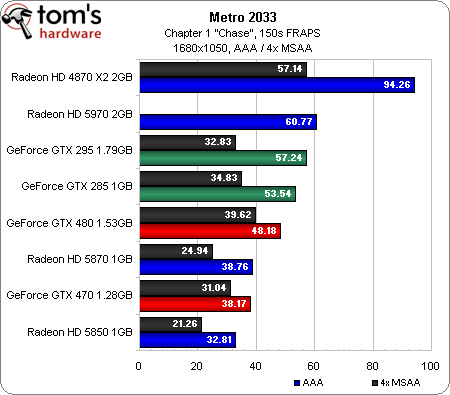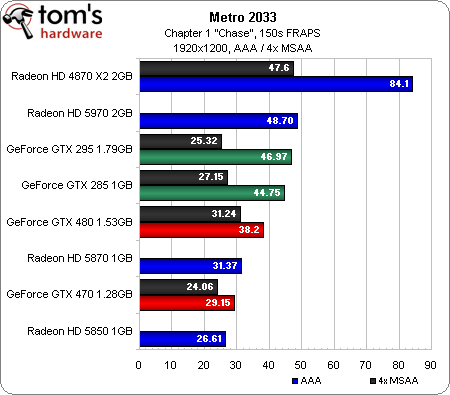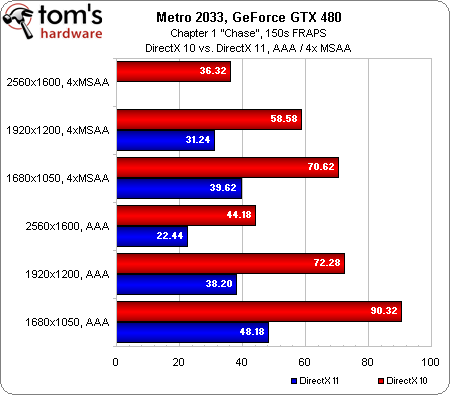GeForce GTX 480 And 470: From Fermi And GF100 To Actual Cards!
Benchmark Results: Metro 2033 (DirectX 10/11)
Those are some of the ugliest charts I’ve ever posted, and the only explanation I can give is that this is a beast of a game with regard to its impact on performance.
You can switch from DirectX 10 to DirectX 11 from the display menu, which is nice. Perhaps the most glaring issue here is that the DirectX 10 cards get a massive performance boost versus the cards running in DirectX 11 mode, affecting the placement of the Radeon HD 4870 X2 and GeForce GTX 285/295.
Disregarding those scores, you have the Radeon HD 5970 on top at 1680x1050 and 1920x1200, followed by the GeForce GTX 480, Radeon HD 5870, GeForce GTX 470, and Radeon HD 5850. At 2560x1600, there’s only one ATI card able to run, and the GeForce GTX 480 is the only DirectX 11 board with enough memory to function with analytical anti-aliasing enabled. See the holes scattered throughout? Those are all settings where the given configuration would start, but then hover between zero and one frame per second. Clearly, ATI has some work to do enabling DirectX 11 with 4xMSAA turned on.
Just how significant is the performance fall-off from DirectX 10 to DirectX 11? Using the GeForce GTX 480, we can see the penalty is quite nearly double, regardless of the anti-aliasing mode you’re using. What could possibly exact such a poignant penalty? Turning on DirectX 11 enables a DirectCompute-based depth of field filter—a cool effect with significant performance ramifications. Clearly, you’ll need a graphics card capable of standing up to this title if you want to see it the way its Ukrainian developer intended.
It’s also worth noting that Metro 2033 supports PhysX. We didn’t benchmark with this feature enabled, but the effects affected by PhysX are numerous.
Get Tom's Hardware's best news and in-depth reviews, straight to your inbox.
Current page: Benchmark Results: Metro 2033 (DirectX 10/11)
Prev Page Benchmark Results: S.T.A.L.K.E.R.: Call Of Pripyat (DirectX 10) Next Page Benchmark Results: Battlefield: Bad Company 2 (DirectX 10/11)



